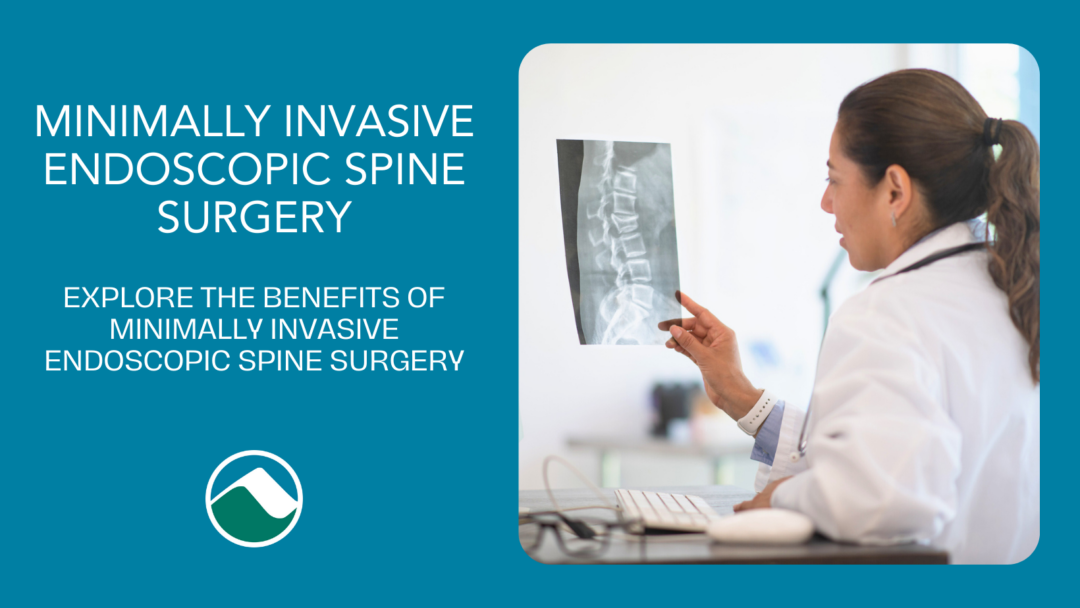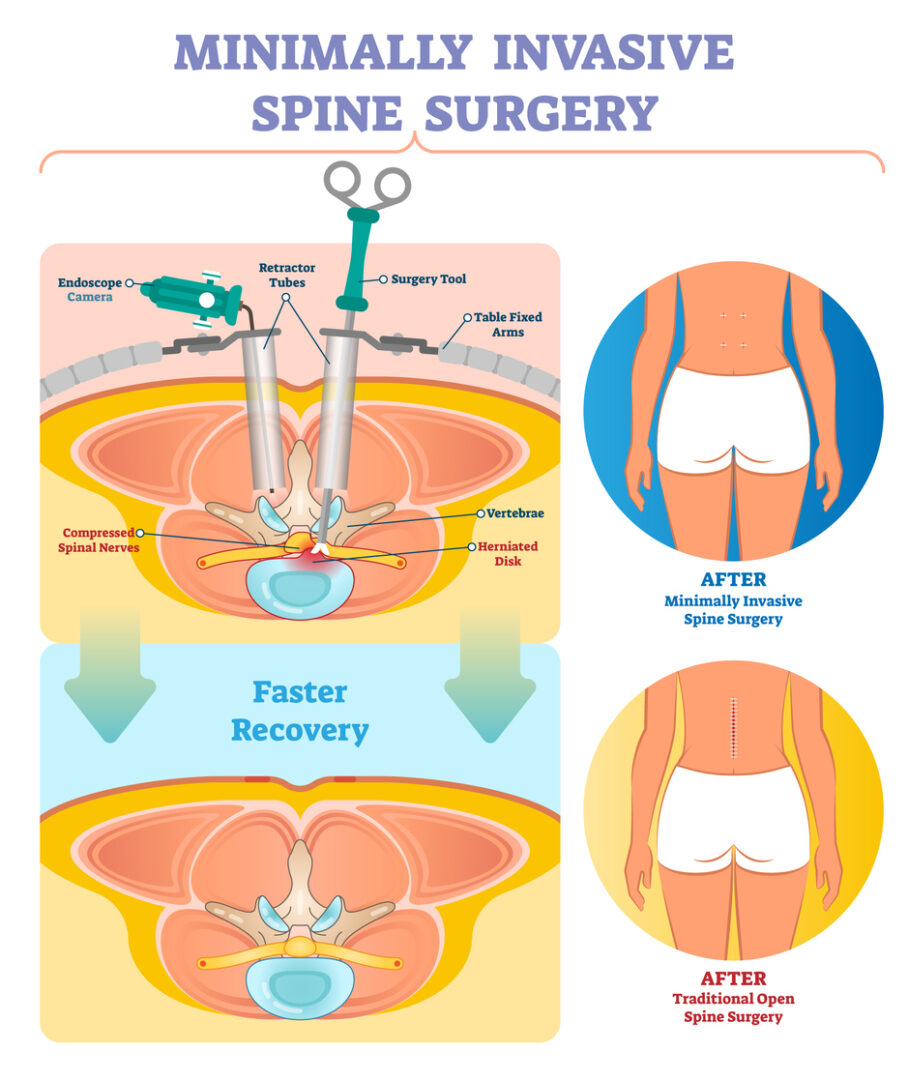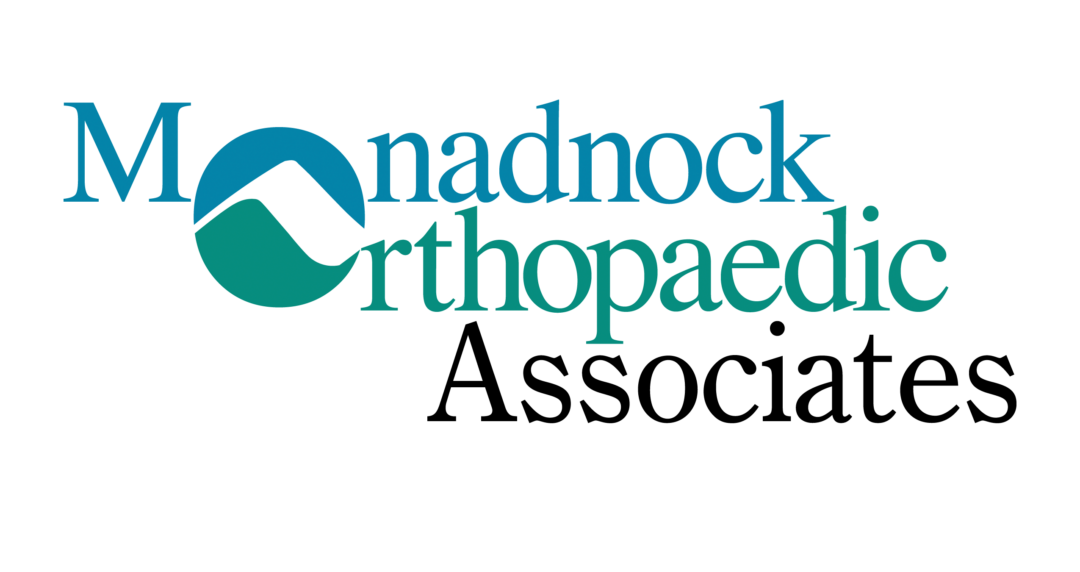Endoscopic Spine Surgery | Discectomy & Laminectomy Surgery

Let’s talk about the term “minimally invasive.” Of course, there are times when surgery is required to solve a problem. But the nature of surgery means that in order to repair an injury or trauma inside your body, we need to cause a trauma to get to it. That’s why it’s so important to minimize how invasive surgery is. In most cases, the smaller the incision, the faster and smoother the recovery. Endoscopic spine surgery is a minimally invasive technique that allows for precise treatment of spinal conditions with minimal disruption to surrounding tissues. Compared to open surgery, our patient’s pain after surgery is lessened, their recovery time is shorter, and their outcomes are improved.

What Is Endoscopic Spine Surgery?
Endoscopic spine surgery involves the use of a small camera and specialized instruments to perform surgery through tiny incisions. This technique is used to treat herniated discs, spinal stenosis, and degenerative disc disease.

Benefits of Minimally Invasive Surgery:
- Reduced Pain: Smaller incisions result in less tissue damage and postoperative pain.
- Quicker Recovery: Patients typically experience faster recovery times and return to normal activities sooner.
- Lower Risk of Complications: Minimally invasive techniques reduce the risk of infection and other complications associated with open surgery.
Common Procedures:
- Discectomy: Removal of a herniated disc to relieve pressure on spinal nerves.
- Laminectomy: Removal of part of the vertebra to alleviate spinal stenosis.
Preparing for Surgery:
- Consultation: We discuss your symptoms and treatment options with you to determine if endoscopic surgery is right for you.
- Pre-Surgical Assessment: We provide you with a thorough evaluation to assess your overall health and readiness for surgery.
Having a spinal condition already disrupts your life. It’s my goal as a surgeon to provide you with an effective solution that doesn’t compound that disruption any more than necessary. By offering a less invasive option for treating spinal conditions, endoscopic spine surgery is a powerful tool in helping us achieve that goal. Talk to us at Monadnock Orthopaedic Associates to learn more about how this innovative approach can benefit you.
Stay well,

Dr. Vache Hambardzumyan, MD, PhD, FEBS
Expert Advice from Dr. Vache Hambardzumyan
“Minimally invasive spine surgery can significantly reduce recovery time and improve outcomes. With the right approach, patients can regain mobility and enjoy a better quality of life.”
About Dr. Vache Hambardzumyan
Dr. Vache Hambardzumyan, MD, PhD, FEBS, is a skilled orthopedic surgeon with extensive expertise in spine surgery, including minimally invasive techniques like endoscopic discectomy and laminectomy. His patient-focused approach ensures individualized care that helps patients return to their daily activities with improved mobility and reduced pain.
Quick Tip: “After spine surgery, follow your physical therapy plan closely. Gradual progress ensures long-term success and helps you avoid re-injury.”
Why Choose Monadnock Orthopaedic Associates?
Our board-certified specialists combine decades of experience with training from prestigious institutions like the Mayo Clinic. We offer comprehensive orthopedic care using advanced techniques and technology, all while providing personalized attention. At Monadnock Orthopaedic Associates, we’re committed to getting you back to pain-free living as quickly as possible with expert, compassionate care tailored to your unique needs. Choose us for expert care that’s close to home, where your well-being is our highest priority.
 Monadnock Orthopaedic Associates
Monadnock Orthopaedic Associates
Monadnock Community Hospital
Bond Wellness Center Suite 200
458 Old Street Road
Peterborough, NH 03458
Phone: 603-924-2144
Fax: 603-924-3993
Array
(
[section_title] =>
[section_text] =>
[posts_selection] => auto_taxonomy_terms
[section_posts] => Array
(
[0] => WP_Post Object
(
[ID] => 40161
[post_author] => 9192204
[post_date] => 2025-05-08 11:19:40
[post_date_gmt] => 2025-05-08 15:19:40
[post_content] =>
[post_title] => In the News: Osteoporosis: Understanding Risk Factors and Prevention Strategies
[post_excerpt] =>
[post_status] => publish
[comment_status] => closed
[ping_status] => closed
[post_password] =>
[post_name] => news-osteoporosis-prevention-250508
[to_ping] =>
[pinged] =>
[post_modified] => 2025-09-10 15:33:50
[post_modified_gmt] => 2025-09-10 19:33:50
[post_content_filtered] =>
[post_parent] => 0
[guid] => https://monadnockcommunityhospital.com/?p=40161
[menu_order] => 0
[post_type] => post
[post_mime_type] =>
[comment_count] => 0
[filter] => raw
)
[1] => WP_Post Object
(
[ID] => 40154
[post_author] => 9192204
[post_date] => 2025-05-06 16:55:56
[post_date_gmt] => 2025-05-06 20:55:56
[post_content] =>
[post_title] => Heartfelt Stories - Partners in Progress, Healing with Purpose: Rosamond's Story
[post_excerpt] =>
[post_status] => publish
[comment_status] => closed
[ping_status] => closed
[post_password] =>
[post_name] => patient-stories-cady-2025
[to_ping] =>
[pinged] =>
[post_modified] => 2025-09-16 12:06:10
[post_modified_gmt] => 2025-09-16 16:06:10
[post_content_filtered] =>
[post_parent] => 0
[guid] => https://monadnockcommunityhospital.com/?p=40154
[menu_order] => 0
[post_type] => post
[post_mime_type] =>
[comment_count] => 0
[filter] => raw
)
[2] => WP_Post Object
(
[ID] => 39804
[post_author] => 9192204
[post_date] => 2025-02-23 14:16:26
[post_date_gmt] => 2025-02-23 19:16:26
[post_content] =>
[post_title] => Celebrating Excellence: Dr. Vache Hambardzumyan’s 100th Spine Surgery Milestone at MCH
[post_excerpt] =>
[post_status] => publish
[comment_status] => closed
[ping_status] => closed
[post_password] =>
[post_name] => vache-100th-spine-surgery-milestone
[to_ping] =>
[pinged] =>
[post_modified] => 2025-08-20 16:51:12
[post_modified_gmt] => 2025-08-20 20:51:12
[post_content_filtered] =>
[post_parent] => 0
[guid] => https://monadnockcommunityhospital.com/?p=39804
[menu_order] => 0
[post_type] => post
[post_mime_type] =>
[comment_count] => 0
[filter] => raw
)
[3] => WP_Post Object
(
[ID] => 39726
[post_author] => 9192204
[post_date] => 2025-01-27 07:18:52
[post_date_gmt] => 2025-01-27 12:18:52
[post_content] =>
[post_title] => Video: Explore the Future of Spine Care: Minimally Invasive Spine Surgery Seminar
[post_excerpt] =>
[post_status] => publish
[comment_status] => closed
[ping_status] => closed
[post_password] =>
[post_name] => innovations-in-minimally-invasive-spine-surgery-video-2025
[to_ping] =>
[pinged] =>
[post_modified] => 2025-09-10 15:45:17
[post_modified_gmt] => 2025-09-10 19:45:17
[post_content_filtered] =>
[post_parent] => 0
[guid] => https://monadnockcommunityhospital.com/dr-vache-hambardzumyan-orthopedic-surgeon-copy/
[menu_order] => 0
[post_type] => post
[post_mime_type] =>
[comment_count] => 0
[filter] => raw
)
[4] => WP_Post Object
(
[ID] => 39463
[post_author] => 9192204
[post_date] => 2025-01-13 16:23:34
[post_date_gmt] => 2025-01-13 21:23:34
[post_content] =>
[post_title] => Provider Spotlight: From Armenia to New Hampshire: Dr Vache's Journey of Healing and Hope
[post_excerpt] =>
[post_status] => publish
[comment_status] => closed
[ping_status] => closed
[post_password] =>
[post_name] => dr-vache-hambardzumyan-orthopedic-surgeon
[to_ping] =>
[pinged] =>
[post_modified] => 2025-09-10 15:36:12
[post_modified_gmt] => 2025-09-10 19:36:12
[post_content_filtered] =>
[post_parent] => 0
[guid] => https://monadnockcommunityhospital.com/dr-terrence-mcnamara-pain-management-specialist-copy/
[menu_order] => 0
[post_type] => post
[post_mime_type] =>
[comment_count] => 0
[filter] => raw
)
[5] => WP_Post Object
(
[ID] => 39693
[post_author] => 9192204
[post_date] => 2025-01-05 09:59:13
[post_date_gmt] => 2025-01-05 14:59:13
[post_content] =>
[post_title] => Reflecting on a Year of Care: Stories of Compassion and Community
[post_excerpt] =>
[post_status] => publish
[comment_status] => closed
[ping_status] => closed
[post_password] =>
[post_name] => celebrating-2024-compassionate-care-stories
[to_ping] =>
[pinged] =>
[post_modified] => 2025-09-10 15:36:18
[post_modified_gmt] => 2025-09-10 19:36:18
[post_content_filtered] =>
[post_parent] => 0
[guid] => https://monadnockcommunityhospital.com/patient-stories-copy/
[menu_order] => 0
[post_type] => post
[post_mime_type] =>
[comment_count] => 0
[filter] => raw
)
[6] => WP_Post Object
(
[ID] => 39124
[post_author] => 9192204
[post_date] => 2024-11-25 07:22:17
[post_date_gmt] => 2024-11-25 12:22:17
[post_content] =>
[post_title] => Osteoporosis: Understanding Risk Factors and Prevention Strategies
[post_excerpt] =>
[post_status] => publish
[comment_status] => closed
[ping_status] => closed
[post_password] =>
[post_name] => osteoporosis-risk-factors-prevention
[to_ping] =>
[pinged] =>
[post_modified] => 2025-09-10 15:35:52
[post_modified_gmt] => 2025-09-10 19:35:52
[post_content_filtered] =>
[post_parent] => 0
[guid] => https://monadnockcommunityhospital.com/benefits-limb-lengthening-surgery-copy/
[menu_order] => 0
[post_type] => post
[post_mime_type] =>
[comment_count] => 0
[filter] => raw
)
[7] => WP_Post Object
(
[ID] => 39429
[post_author] => 9192204
[post_date] => 2024-11-10 14:18:29
[post_date_gmt] => 2024-11-10 19:18:29
[post_content] =>
[post_title] => Expanding Specialized Care: New Service Lines at Monadnock Community Hospital
[post_excerpt] =>
[post_status] => publish
[comment_status] => closed
[ping_status] => closed
[post_password] =>
[post_name] => new-services-2024
[to_ping] =>
[pinged] =>
[post_modified] => 2025-09-10 15:23:32
[post_modified_gmt] => 2025-09-10 19:23:32
[post_content_filtered] =>
[post_parent] => 0
[guid] => https://monadnockcommunityhospital.com/comprehensive-healthcare-services-copy/
[menu_order] => 0
[post_type] => post
[post_mime_type] =>
[comment_count] => 0
[filter] => raw
)
[8] => WP_Post Object
(
[ID] => 38029
[post_author] => 9192204
[post_date] => 2024-09-30 07:20:13
[post_date_gmt] => 2024-09-30 11:20:13
[post_content] =>
[post_title] => Limb Lengthening Surgery | Solutions for Limb Length Discrepancies
[post_excerpt] =>
[post_status] => publish
[comment_status] => closed
[ping_status] => closed
[post_password] =>
[post_name] => benefits-limb-lengthening-surgery
[to_ping] =>
[pinged] =>
[post_modified] => 2025-09-10 15:34:36
[post_modified_gmt] => 2025-09-10 19:34:36
[post_content_filtered] =>
[post_parent] => 0
[guid] => https://monadnockcommunityhospital.com/?p=38029
[menu_order] => 0
[post_type] => post
[post_mime_type] =>
[comment_count] => 0
[filter] => raw
)
[9] => WP_Post Object
(
[ID] => 38030
[post_author] => 9192204
[post_date] => 2024-09-02 07:20:15
[post_date_gmt] => 2024-09-02 11:20:15
[post_content] =>
[post_title] => Endoscopic Spine Surgery | Discectomy & Laminectomy Surgery
[post_excerpt] =>
[post_status] => publish
[comment_status] => closed
[ping_status] => closed
[post_password] =>
[post_name] => benefits-of-minimally-invasive-endoscopic-spine-surgery
[to_ping] =>
[pinged] =>
[post_modified] => 2025-09-10 15:23:26
[post_modified_gmt] => 2025-09-10 19:23:26
[post_content_filtered] =>
[post_parent] => 0
[guid] => https://monadnockcommunityhospital.com/?p=38030
[menu_order] => 0
[post_type] => post
[post_mime_type] =>
[comment_count] => 0
[filter] => raw
)
[10] => WP_Post Object
(
[ID] => 38028
[post_author] => 9192204
[post_date] => 2024-08-05 08:00:09
[post_date_gmt] => 2024-08-05 12:00:09
[post_content] =>
[post_title] => Minimally Invasive Discectomy Benefits | Herniated Disc Treatment
[post_excerpt] =>
[post_status] => publish
[comment_status] => closed
[ping_status] => closed
[post_password] =>
[post_name] => benefits-minimally-invasive-discectomy
[to_ping] =>
[pinged] =>
[post_modified] => 2025-09-10 15:35:45
[post_modified_gmt] => 2025-09-10 19:35:45
[post_content_filtered] =>
[post_parent] => 0
[guid] => https://monadnockcommunityhospital.com/?p=38028
[menu_order] => 0
[post_type] => post
[post_mime_type] =>
[comment_count] => 0
[filter] => raw
)
[11] => WP_Post Object
(
[ID] => 38027
[post_author] => 9192204
[post_date] => 2024-07-22 10:00:48
[post_date_gmt] => 2024-07-22 14:00:48
[post_content] =>
[post_title] => Bow Leg Correction Surgery | Osteotomy, Guided Growth Surgery
[post_excerpt] =>
[post_status] => publish
[comment_status] => closed
[ping_status] => closed
[post_password] =>
[post_name] => benefits-bow-leg-correction-surgery
[to_ping] =>
[pinged] =>
[post_modified] => 2025-08-20 11:11:39
[post_modified_gmt] => 2025-08-20 15:11:39
[post_content_filtered] =>
[post_parent] => 0
[guid] => https://monadnockcommunityhospital.com/?p=38027
[menu_order] => 0
[post_type] => post
[post_mime_type] =>
[comment_count] => 0
[filter] => raw
)
)
[posts_limit] => 12
[post_type] => post
[taxonomy] => tag
[terms] => hambardzumyan, back
[section_id] => post-grid-4
)
